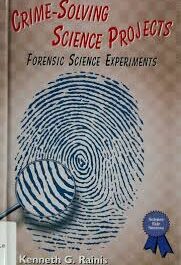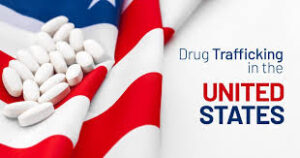Counterfeiting and intellectual property (IP) theft are significant economic crimes in the United States, impacting businesses, consumers, and the overall economy. These illicit activities range from the production and distribution of counterfeit goods to the unauthorized use of copyrighted material and patent infringement. This essay provides a detailed examination of the scope, impacts, and responses to counterfeiting and IP theft in the USA.
Understanding Counterfeiting and Intellectual Property Theft
Definition and Scope:
Counterfeiting involves the production and sale of imitation products that are passed off as genuine, infringing on trademarks. Intellectual property theft encompasses a broader range of violations, including copyright infringement, patent theft, and trade secret misappropriation. These activities undermine the legal rights granted to inventors and creators to protect their innovations and creative works.
Industries Affected:
Virtually no sector is immune to counterfeiting and IP theft, but some of the most impacted include pharmaceuticals, entertainment, fashion, technology, and automotive parts. Counterfeit goods not only result in lost sales for legitimate businesses but also pose serious risks to public health and safety, especially in the case of fake medications and auto parts.

Impacts of Counterfeiting and IP Theft
Economic Losses:
The U.S. economy suffers billions of dollars in losses annually due to counterfeiting and IP theft. These losses manifest as reduced revenue for affected businesses, job losses among legitimate manufacturers and retailers, and decreased tax revenues for governments.
Consumer Risks:
Counterfeit products often are of inferior quality and can pose health and safety risks, lacking the compliance with safety standards that legitimate products meet. This is particularly concerning in industries like pharmaceuticals, where counterfeit drugs may contain incorrect or harmful ingredients.
Innovation and Investment:
Intellectual property theft undermines the incentive for innovation and investment in research and development. When inventors and creators cannot secure the rights to their innovations or are likely to see their work stolen, the motivation to invest time and resources into new projects diminishes, slowing technological advancement and economic growth.
Responses to Counterfeiting and IP Theft
Legal and Regulatory Frameworks:
The United States has developed comprehensive legal and regulatory mechanisms to protect intellectual property rights, including the Lanham Act for trademark protection, the Copyright Act, and the Patent Act. Enforcement agencies like the U.S. Customs and Border Protection play a critical role in intercepting counterfeit goods at borders.
International Cooperation:
Given the global nature of counterfeiting and IP theft, international cooperation is crucial. The U.S. participates in several international agreements and collaborates with foreign governments and international organizations to strengthen IP enforcement worldwide, such as through the World Intellectual Property Organization (WIPO) and the World Trade Organization (WTO).
Private Sector Initiatives:
Businesses are also taking proactive measures to combat counterfeiting and IP theft, including investing in advanced authentication technologies, pursuing legal action against violators, and educating consumers about the risks of counterfeit products. Partnerships between the private sector and law enforcement agencies enhance efforts to track and dismantle counterfeiting networks.
Public Awareness and Education:
Raising awareness among consumers about the dangers of counterfeit products and the importance of respecting intellectual property rights is vital. Efforts include campaigns to educate the public on how to identify counterfeit goods and the broader impacts of IP theft on society.

Challenges and Future Directions
Despite ongoing efforts, counterfeiting and IP theft remain pervasive challenges, fueled by the rise of e-commerce and sophisticated counterfeiting technologies. The digital age has facilitated the distribution of pirated content and counterfeit goods, making enforcement more difficult.
Future strategies to combat these crimes must adapt to technological advancements and changing consumer behaviors. This includes leveraging blockchain and other digital verification technologies to authenticate products, enhancing online monitoring and reporting mechanisms, and fostering a culture of respect for intellectual property rights
To further delve into the intricacies of counterfeiting and intellectual property theft in the USA, it’s crucial to explore additional dimensions of this issue, including technological challenges, the role of online platforms, and potential future strategies for more effective enforcement and protection.
Technological Challenges in Combating Counterfeiting and IP Theft
The rapid advancement of technology presents both opportunities and challenges in the fight against counterfeiting and IP theft. On one hand, technologies such as blockchain, artificial intelligence (AI), and machine learning offer new tools for authenticating products and tracking the distribution of goods through supply chains. For example, blockchain can provide a transparent and unalterable record of product provenance, helping to verify authenticity.
On the other hand, counterfeiters and IP thieves also leverage technology to create more convincing fakes and to distribute pirated content more widely and efficiently. The internet facilitates the global reach of counterfeit goods, while advanced printing and manufacturing technologies make it easier to produce high-quality fakes that are difficult to distinguish from genuine products.
The Role of Online Platforms
E-commerce platforms, social media, and online marketplaces have dramatically changed the landscape of retail and content distribution, but they have also created new avenues for counterfeiters and IP thieves. These platforms can unwittingly host listings for counterfeit goods or serve as channels for distributing pirated content. The sheer volume of online transactions and the anonymity afforded to sellers make it challenging for platforms and enforcement agencies to identify and take action against violators.
In response, many online platforms have implemented their own policies and procedures to detect and remove counterfeit listings, and to respond to notices of copyright infringement. These measures include automated systems to identify suspect listings, partnerships with brand owners to verify authenticity, and programs that allow rights holders to report violations. However, the effectiveness of these measures varies, and continuous improvement and adaptation are necessary to stay ahead of counterfeiters.

Future Strategies for Enforcement and Protection
Enhancing Legal Frameworks:
Although the U.S. has robust laws protecting intellectual property, ongoing adaptation of legal frameworks to address emerging technologies and methods of counterfeiting and piracy is essential. This includes considering laws that hold online platforms more accountable for facilitating IP theft, while balancing the need for free and open internet.
International Collaboration:
Strengthening international cooperation is critical, given the global nature of counterfeiting and IP theft. This includes not only law enforcement collaboration but also harmonizing IP protection standards and enforcement mechanisms across countries to close loopholes that counterfeiters exploit.
Education and Public Awareness:
Continuing to educate consumers about the dangers of counterfeit products and the importance of intellectual property rights is fundamental. Awareness campaigns can help change consumer behavior and reduce demand for counterfeit goods, thereby impacting the profitability of these illegal operations.
Innovative Use of Technology:
Investing in and adopting cutting-edge technologies for IP protection and enforcement can make a significant difference. For example, AI and machine learning can enhance the detection of counterfeit goods and pirated content online, while augmented reality (AR) applications could offer consumers new ways to verify product authenticity.
Conclusion
Counterfeiting and intellectual property theft in the USA represent a multifaceted challenge that impacts the economy, public health and safety, and the broader ecosystem of innovation and creativity. Addressing this issue requires a comprehensive approach that includes legal and regulatory measures, international cooperation, technological innovation, and public engagement. By fostering a collaborative and adaptive response among all stakeholders, it’s possible to protect intellectual property rights more effectively and ensure the integrity of the marketplace and the safety of consumers.


